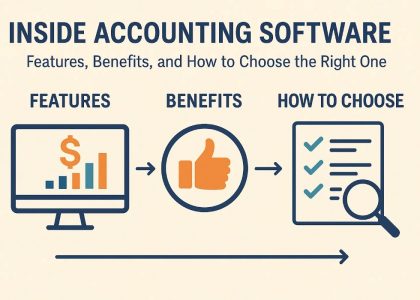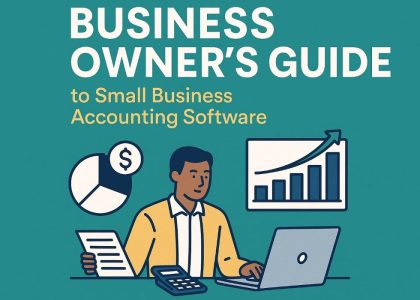Accounting software plays a critical role in streamlining your business’s financial operations in today’s digital-first economy. With countless options available, selecting the right tool isn’t just a checkbox activity—it directly impacts your business’s accuracy, scalability, and long-term financial health. Whether you’re a freelancer, startup founder, or running an expanding business, here are five essential tips you can’t afford to ignore when buying accounting software.
1. Know Your Business Needs First
Before browsing product features or pricing plans, take a moment to assess your accounting requirements. Do you need invoicing and billing? Inventory tracking? Payroll management?
For example, a freelancer might only need basic invoicing, while an eCommerce business will need multi-currency support and integration with shopping platforms. The clearer you are about your needs, the easier it becomes to shortlist the right software.
Pro Tip: Make a list of your top 5 must-have features before starting your search.
2. Choose Cloud-Based for Flexibility
Cloud-based accounting software offers real-time access to your financial data from anywhere—perfect for remote teams or business owners on the go. You don’t have to worry about data backups or software updates; everything happens automatically.
Plus, cloud tools often include bank integration, mobile apps, and multi-device access, giving you complete control over your finances.
Insider Insight: Cloud platforms like Zoho Books, QuickBooks Online, and Xero are great starting points for SMBs.
3. Prioritize Ease of Use & User Interface
Even the most feature-rich software is useless if you or your team can’t navigate it easily. A user-friendly dashboard, intuitive menus, and simple reporting features save time and reduce errors.
Before committing, sign up for a free trial or request a demo. Observe how smoothly tasks like adding expenses, reconciling bank statements, or generating reports can be performed.
Don’t Ignore: If a tool feels complicated from day one, it’s unlikely to get easier with time.
4. Check Integration with Other Tools
Your accounting software shouldn’t exist in isolation. It should seamlessly integrate with the other tools your business uses—such as CRM systems, payroll tools, inventory software, or eCommerce platforms.
Automation between systems reduces manual data entry and minimizes errors, making your operations smoother and more efficient.
Integration Example: Connecting your accounting software with your bank can automate transaction imports and reconciliation.
5. Look at Pricing vs Value (Not Just Cost)
While it’s tempting to go with the cheapest software, low cost shouldn’t be your only criteria. Evaluate the total value—support, scalability, updates, features, and security.
Most providers offer tiered pricing. Don’t overpay for features you don’t need, but don’t underinvest in something crucial either. Also, watch for hidden fees like charges for additional users, data backups, or advanced reports.
Value Check: Does the software offer free upgrades? Is customer support responsive? What’s their data security policy?
Final Thoughts: Your Software, Your Success
The right accounting software streamlines your finances, saves time, and empowers better decisions. Rushing into the wrong tool, however, can lead to costly mistakes and frustration.
Take your time. Try before you buy. Read real reviews. Most importantly, choose a solution that aligns with both your current needs and future growth.
✅ Bonus Checklist Before You Buy:
- Define must-have features
- Choose cloud-based over desktop
- Test usability with a demo
- Check integrations with your tech stack
- Compare total value—not just price




